
Kingsley Holgate's Afrika Odyssey Expedition


To reach Matusadona National Park, the second destination in the Holgate Foundation’s Afrika Odyssey expedition, we cross Botswana’s Tuli Block en route to Zimbabwe and set up a wild camp in community-owned cattle lands. There are still plenty of signs of wildlife around. As it’s the school holidays, the next generation of Holgate explorers – Kingsley Holgate’s grandkids Miabella and Scarlett – have come along on this chapter. They love expedition life and certainly add colour and humour to the journey.
As night falls, a clapped-out bakkie comes rattling down the dirt road, screeches to a stop in a cloud of dust and then bumps across to where we’re pitching our tents. Out tumble four friendly Tswana locals, a big-stomached jovial gent in a holey T-shirt is carrying a 12-bore shotgun. It turns out they’re the community’s anti-poaching/stock-theft brigade. “You are most welcome,” he says with a chuckle, “but please be careful – plenty of elephants around here.” The girls’ eyes go as round as saucers, and they quickly pull their chairs closer to the campfire.
Renowned African explorer Kingsley Holgate and his expedition team from the Kingsley Holgate Foundation recently set off on the Afrika Odyssey expedition – an 18-month journey through 12 African countries to connect 22 national parks managed by African Parks. The expedition’s journey of purpose is to raise awareness about conservation, highlight the importance of national parks and the work done by African Parks, and provide support to local communities. Follow the journey: see stories and more info from the Afrika Odyssey expedition here.

We dislike busy commercial border crossings, so leave Botswana from the remote Mabolwe Border Post. “You can cross into Zimbabwe only when the Shashe River is dry,” says the friendly border official before selling us hot, fresh magwinyas (small doughnuts) baked by his wife. Then, we’re off across the wide, tree-lined, sandy riverbed. In the small 10mx10m Mlambapele Border Post office on the Zimbabwean side, we can only write good things in a dog-eared notebook marked ‘Compliments and Complaints’. Whilst we go through the rigamarole of checking passports and vehicle papers, Scarlett makes friends with a trussed-up black-and-white goat, which she names Oreo, much to the amusement of the locals, who have other plans for it. We’re the only border-crossers, and there are smiles all around. The entry stamp comes down with a thump – welcome to Zimbabwe!
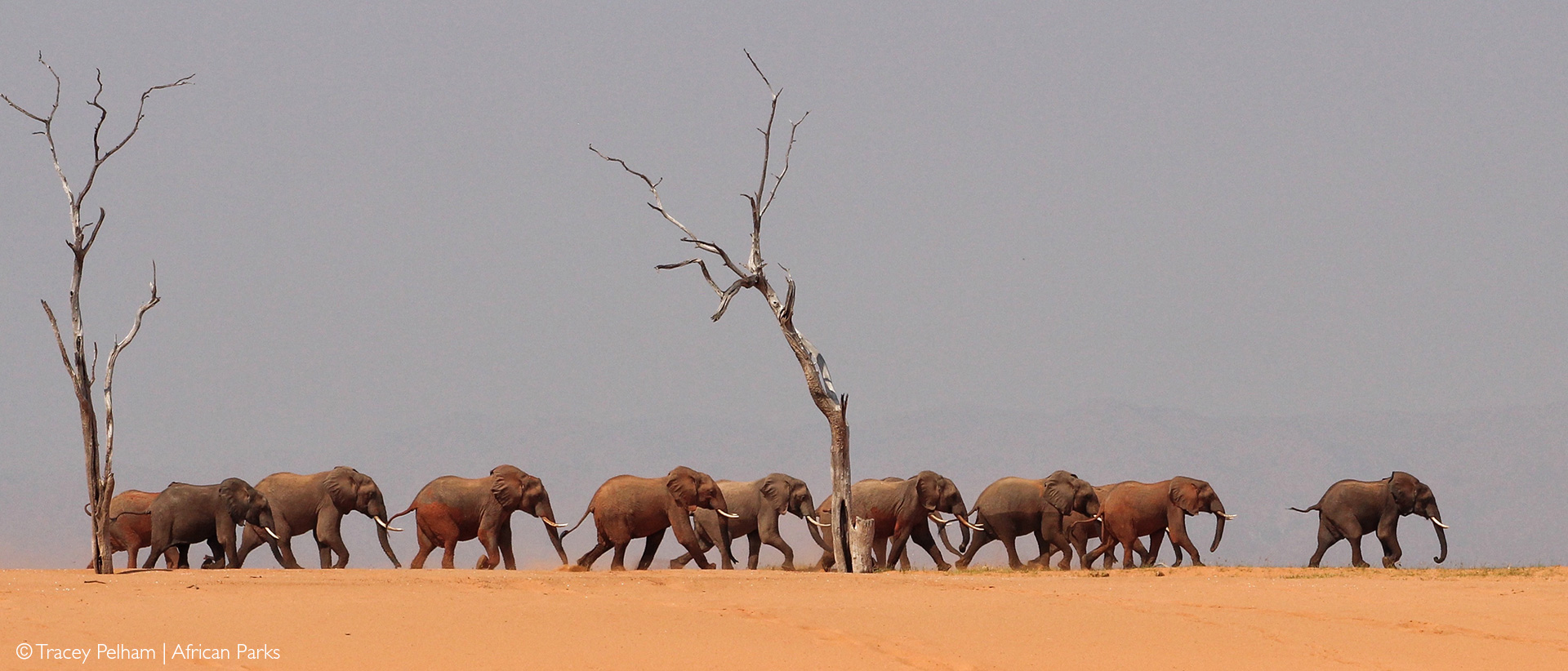
Zigzag to Matusadona
Across Matabeleland we encounter donkey carts, baobabs, friendly smiles and waves from kids in wide-brimmed, school-issue sun hats. We follow little-used dirt tracks through cattle country to enter the Matopos from the south. Our safari sees us camping amongst wildlife with forever views over this ancient place. At sunset, we sit quietly amongst the huge, lichen-covered granite boulders where ley lines are said to interconnect. Iridescent green-blue lizards scuttle over the rockface, and elephant shrews dash between the smooth, round boulders glowing gold in the fading light. A black eagle soars overhead, and the only sound to be heard is birdsong carried on the wind. There’s magnetic energy here.
We dodge potholes down to Mlibizi on the southern shoreline of Lake Kariba, where, around the evening campfire, we chat about our past expeditions on the Zambezi – our favourite river.
The final zigzag to our safari in Matusadona National Park is an adventure, and we pass giant, centuries-old baobabs and neat Batonka villages. We navigate narrow bridges with dangerously crumbling sides. Mopane flies share our roadside lunch of tuna sarmies with tomatoes bought at a village market. We stop at a roadside craft stall and purchase a small, hand-carved wooden rhino from a Batonka craftsman, which we symbolically name ‘Dona’. Miabella buys a little wooden pangolin and calls it ‘Halo’. Black rhinos were once such an iconic species in the Zambezi Valley until poaching wiped them out, and pangolins are now the most trafficked animal in the world. How interesting that, out of this region’s iconic wildlife, the craftsman had chosen to carve these two endangered species.
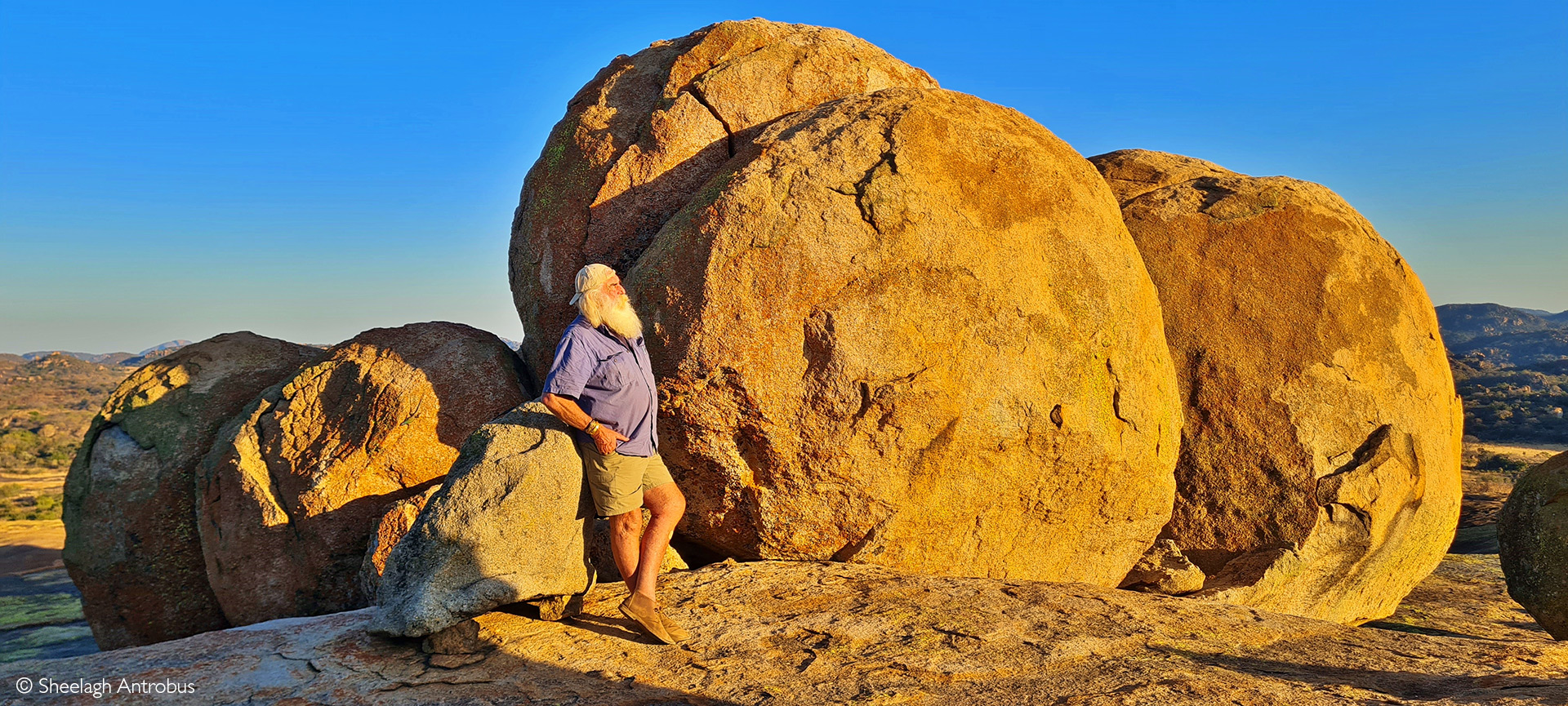

Resilience
Matusadona means ‘where the dung falls’, referring no doubt to the steepness of this incredibly wild and beautiful escarpment that sharply drops 600m to the Kariba shoreline far below. It is said that on occasion, a round dung dropping can tumble far down the steep, well-pounded elephant tracks that crisscross this ancient gateway. In the rainy season, these tracks transform into a wonderland of waterfalls and adventure-filled treks through deep gorges.
Travelling into Matusadona National Park, we expect a difficult, rough and rocky track from the top of the escarpment to the Kariba lakeshore below. But then we witness something remarkable that this part of the world hasn’t seen in years. It’s a big, noisy, yellow and powerful endangered species: a brand new grader. Thanks to African Parks now managing this venerated Zimbabwean park, the machine is hard at work making the steeply sloping road easily passable, providing a further incentive for 4×4 travellers to make this fascinating journey.
 Find out about Zimbabwe for your next African safari. We have ready-made safaris to choose from, or ask us to build one just for you.
Find out about Zimbabwe for your next African safari. We have ready-made safaris to choose from, or ask us to build one just for you.
Matusadona offers adventure in 147,000ha of wilderness. Apart from the newly restored lodges and serviced campsites, there are also genuinely wild, unfenced 4×4 sites. We come across some overlanders wild camping next to an inlet of Lake Kariba. Nearby, two big male lions feed on a dead hippo as squabbling vultures scrabble for a foothold in the surrounding trees. A substantial crocodile cruises out into deeper water festooned in green water hyacinth, a single, pale purple flower comically perched above one primaeval eye. We encounter a safari roadblock on the track down to Tashinga Camp – as lions block our path. At the camp, park manager Mike Pelham and his wife Tracey are waiting to welcome us. Surrounded by impala and visited by the occasional elephant, we pitch camp under the spreading branches of giant sycamore fig trees on the shoreline of Lake Kariba.
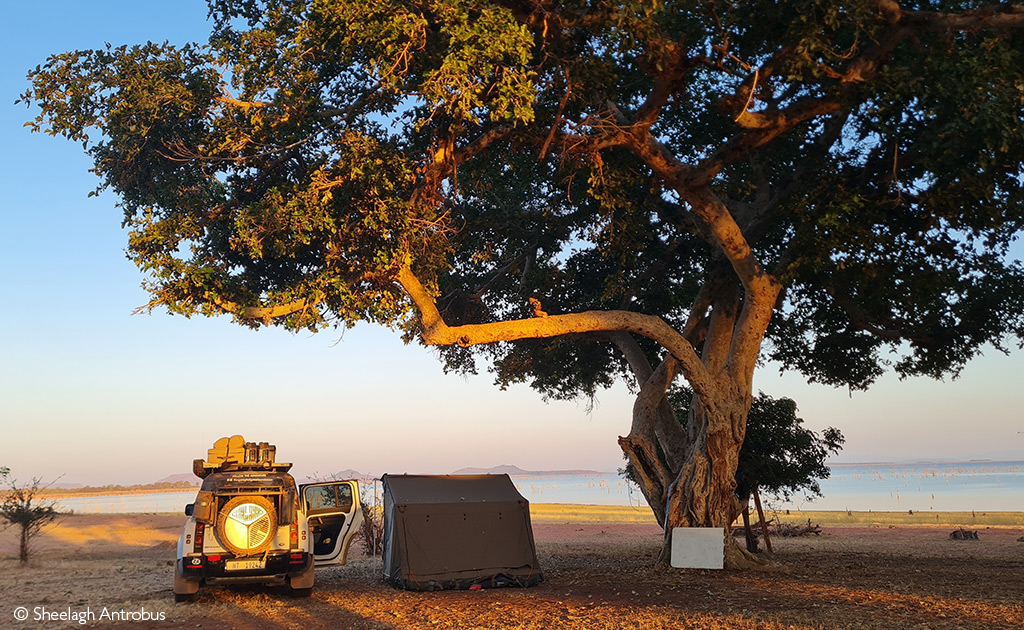
In the morning, we head to the operations room, where we meet the team from the Matusadona Conservation Trust (MCT) – a vibrant partnership between ZimParks and African Parks that began in 2019. “I’ve never seen people work so hard to become part of the new MCT,” remarks Mike, as members of the law enforcement corps snap to attention. Tough, intelligent, disciplined and committed, the challenges of restoring this park are immense for Mike and his staff: fish and bushmeat poaching, illegal gold panning up in the mountains, destructive fire-burns and human-wildlife conflict. The challenges of restoring the Matusadona ecosystem, protecting the pristine rivers and springs on the escarpment and rebuilding community relationships are all taken in stride. To top it all off, there is also the training up a first-class law enforcement team that will ensure the protection of black rhinos and other vital species when the time comes for them to be re-introduced.
“There’s immense pride here; we don’t compromise on what’s become known as ‘Matusadona quality’. Resilience is the key attribute that we look for in all our staff,” Mike tells us as he stands in front of a map that shows the ruggedness of the park’s terrain, the Kariba shoreline and surrounding community districts. “As you know, things have been tough here in Zim, so a good job, decent living conditions and being paid on time means a lot. We’re also extremely fortunate to have the full support of ZimParks and excellent cooperation with the National Judiciary’s dedicated Wildlife Directorate. Despite the difficulties of the past few years, these two departments have remained solid.”
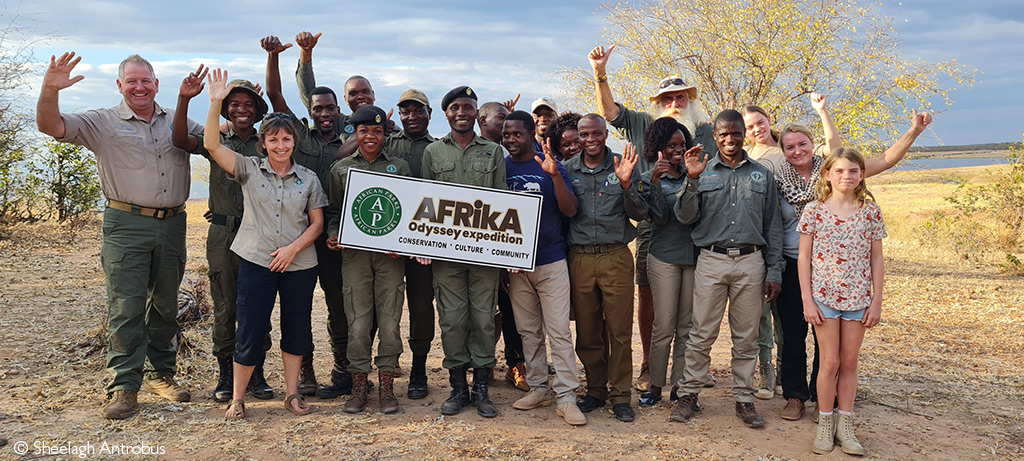

“But in today’s world, conservation cannot be successful without the support of neighbouring communities,” he continues. “So a big focus of the MCT is working with community structures and district councils to build knowledge and ensure that local people also benefit from Matusadona.” And this is where the African Parks model of community involvement is outstanding. Daniel Sithole, Matusadona’s Community Manager, tells us that tomorrow is Umuganda Day – an idea taken from the Rwandan practice of people coming together once a month to engage in community outreach and help one another.
 DID YOU KNOW that African Parks offers safari camps (lodges and campsites) where 100% of tourism revenue goes to conservation and local communities? Find out more and book your African Parks safari.
DID YOU KNOW that African Parks offers safari camps (lodges and campsites) where 100% of tourism revenue goes to conservation and local communities? Find out more and book your African Parks safari.
The expedition team is all hands-on deck. The following morning, we load one of the expedition Defenders onto a small ferry and chug across the Ume River, pushed along by a noisy, belt-driven, single-cylinder engine to Masamba Fishing Camp. This is one of two commercial livelihood projects on the lakeshore, which have seen a seven-fold increase in the catch thanks to the MCT’s efforts to protect the legal permit holders and stop fish-poaching syndicates from plundering the Matusadona shoreline.
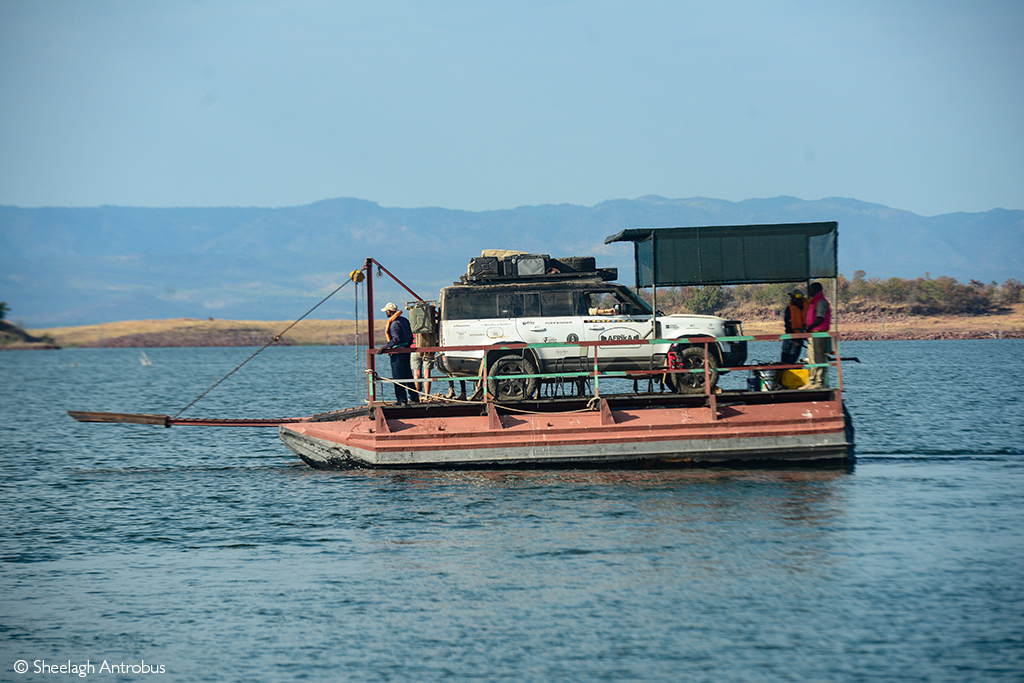
Jovial Chief Mola and the village councillors greet us warmly before we all get to work to give the community hall a colourful makeover. Dirty walls are cleaned and painted, and then, using the ample stencils we’ve brought from SA, the building is transformed into a kaleidoscope of colour with a wildlife theme. Rhino, elephant, giraffe, zebra, lion, cheetah and buffalo, and ‘Musoma Hall’ in big, bold letters are all painted onto the walls. It’s great to see the enthusiasm of the Matusadona staff and camp residents, all wanting their turn with a paint brush, as school children sit in the shade of a big knob-thorn tree, putting the finishing touches to their Wildlife Art assignments. There are bright colours, laughter and smiles all around with Chief Molo presenting simple prizes – building bridges between conservation and communities.
There’s so much good stuff to do and such a good vibe that the Umuganda events stretch into the next two days with Daniel and his community team. There are malaria-prevention drives for pregnant women and mothers with young children, and the distribution of reading glasses to poor-sighted elderly folk at local clinics. Then there is the decorating of the walls of Matusadona Primary School inside the tidy and freshly-painted staff village, and the judging of the regional finals of the children’s Wildlife Art Competition – all with an exciting conservation theme.
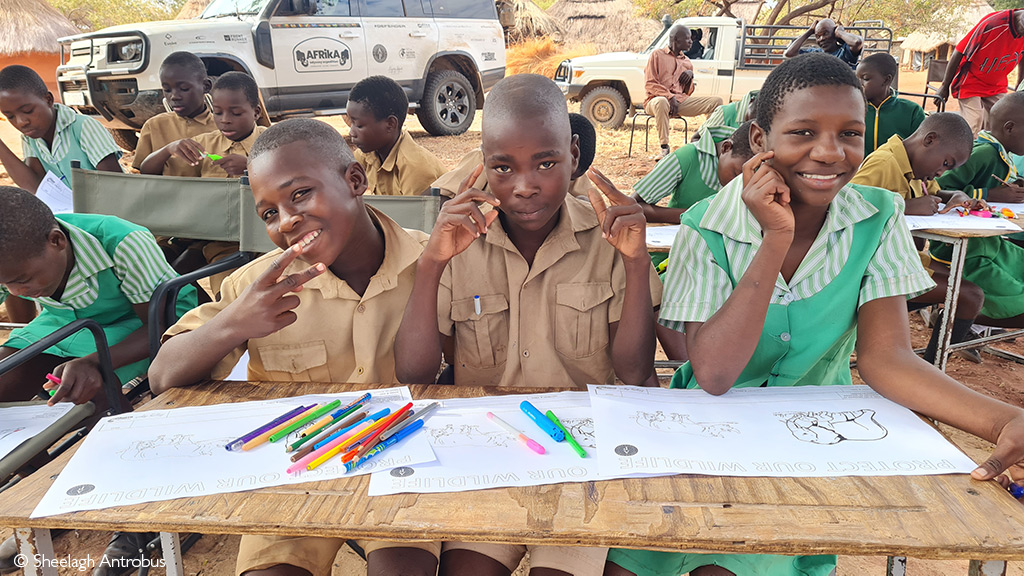
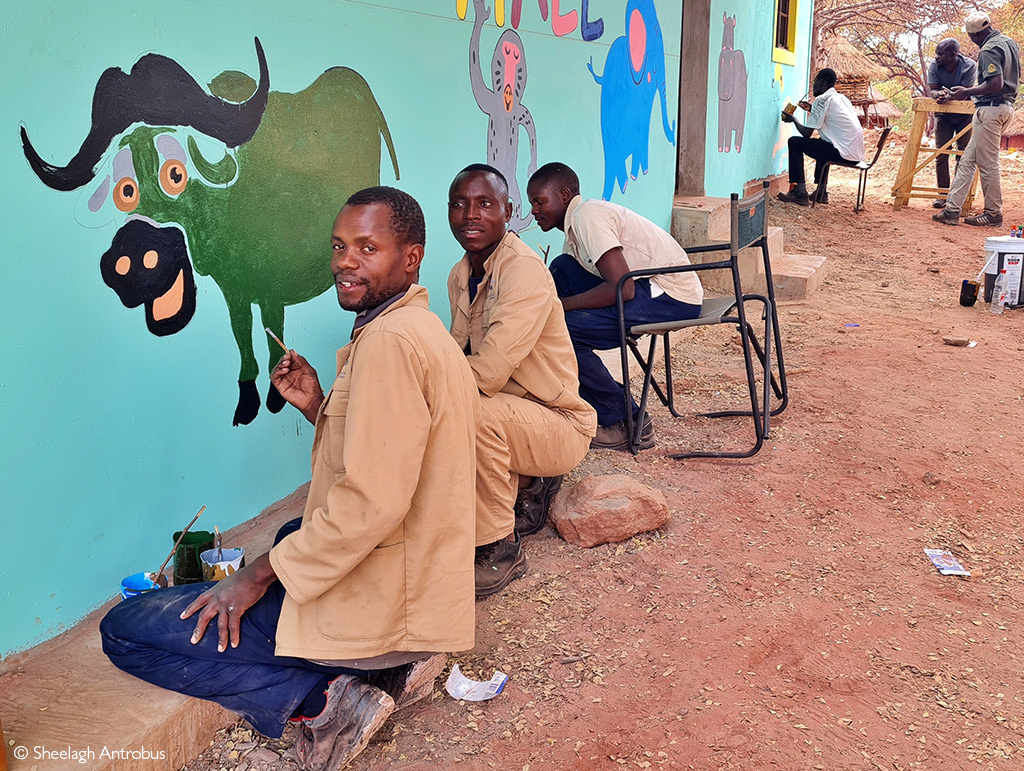
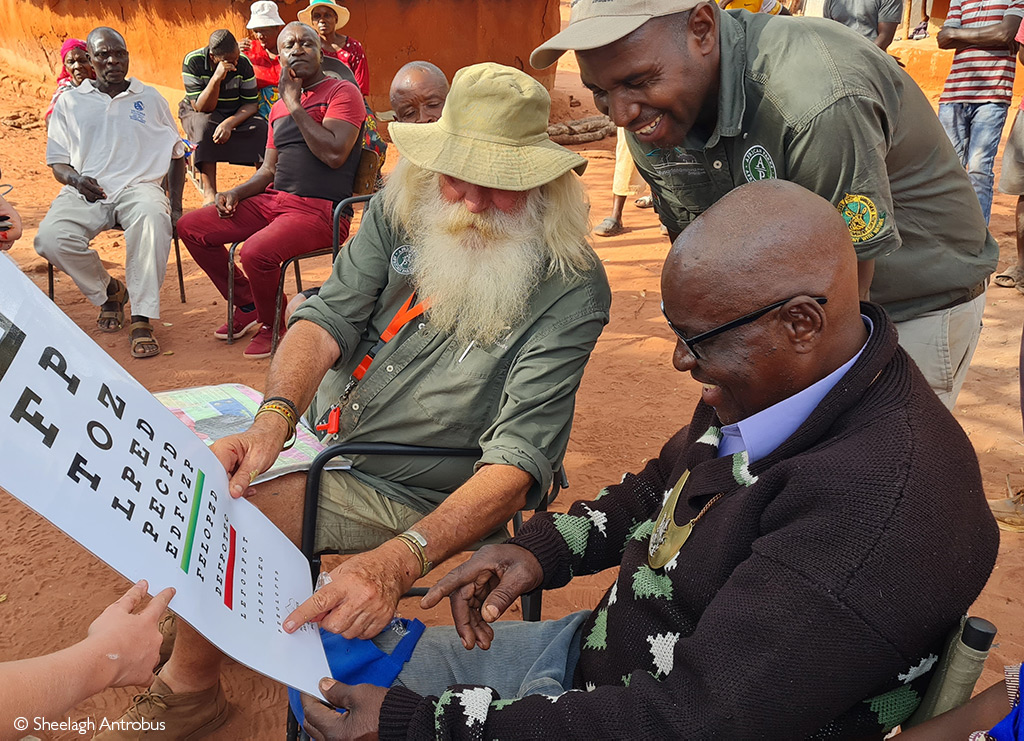
Tired, dirty and covered in paint, we stagger back to camp each evening. We love the golden glow of the sunsets over Kariba with views across to Bumi Hills. Lions roar at the full moon, we hear grunting hippos, and there is a hyena skulking in the shadows, hoping we’ve left the camp kitchen door open. Around the campfire at night, we get to chat more with Mike and his Matusadona team. We also meet fascinating characters like Richard and Gilly Thornycroft from the Flying For Wildlife Trust, who arrive in their light sport aircraft to fly volunteer aerial patrols. We listen intently to their stories of hope for the future of this magnificent piece of Africa.
Renaissance
One morning, there’s much excitement at the park’s headquarters: a large herd of buffalo has appeared on the Matusadona shoreline for the first time in weeks. “The staff say they can’t believe how the animals are returning to the lakeshore,” says Mike with a grin. “The wildlife isn’t scared anymore – even elephants with tiny babies are revealing themselves again.” What a wonderful sign of this legendary park’s renaissance.
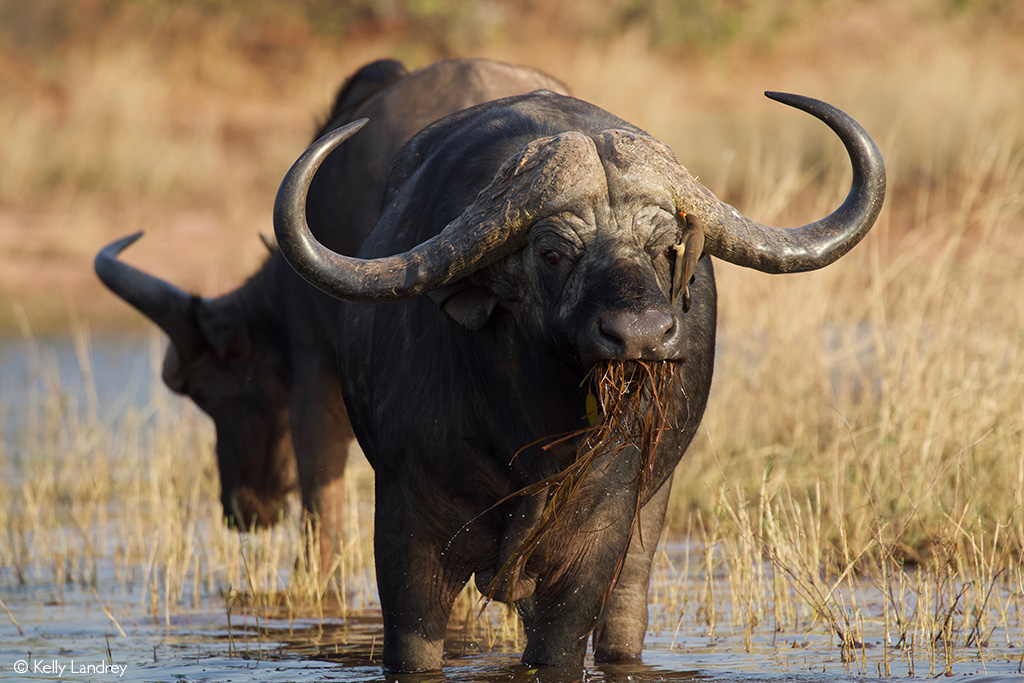
As always, some symbolic traditions are linked to this Afrika Odyssey expedition. Carrying his rifle as if it’s an extension of his body and reading faint tracks and signs, Mike gives us short cameos of wildlife movements as we track through the mopane woodland to a secret pool fed by the springs that bubble out of the Matusadona escarpment. It’s a beautiful spot; a hippo explodes through the long grass and scrambles up the opposite bank. Mike draws us into a huddle and, in a whisper, says, “In the old days, when Matusadona was a black rhino stronghold, I tracked many of them to their favourite secret drinking pools just like this one.” He reverently dips the expedition calabash into the crystal-clear pool. He collects a thimbleful of symbolic water – a ceremony that will take place in all 22 protected areas managed by African Parks on our 12-country journey.
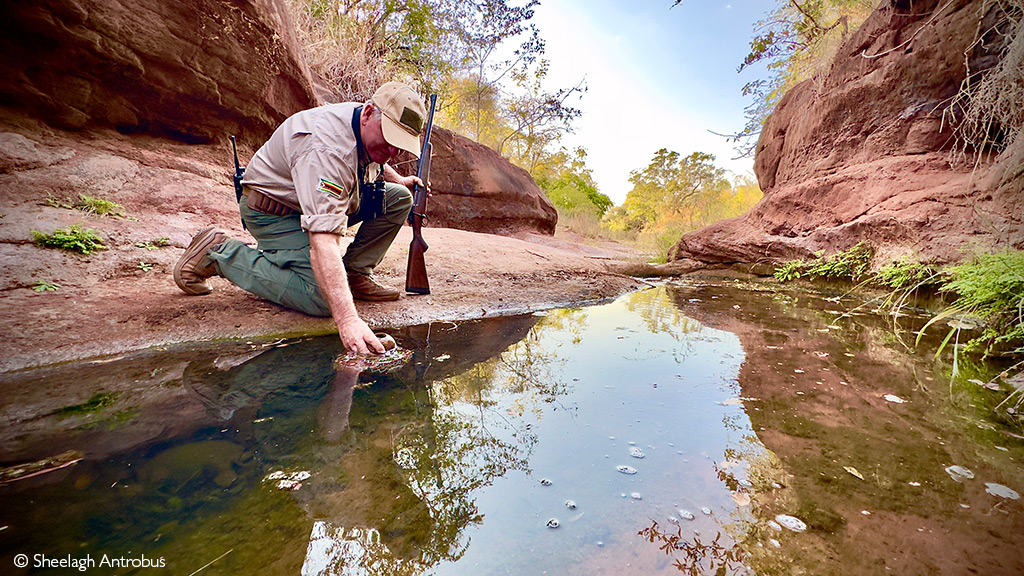

There’s a strong smell of elephant. We come across a mound of fresh dung, the leaves and grasses hardly chewed – a sign of old age and few teeth. Mike silently tracks forward and points out an elderly elephant cow, her bony head just visible as she browses from a tamarind tree, oblivious to our presence.
As we return to the road, Mike bends down and grabs a fistful of foliage from a grey-green shrub. “This is wild basil, which, along with many other herbs and plants that grow here, makes Matusadona a great habitat for black rhino. One day, if all goes according to plan and the communities approve, we’ll have them back here. It will be a full circle as they will be the progeny of the original Zambezi Valley black rhino, removed 30 years ago to places of safety to protect their genealogy – along with sable and roan antelope and eland, which are also needed to restore the entire ecosystem. When that happens, Matusadona will become an anchor of safety and security – not just for wildlife, but for the wider community. That’s our 10-year goal.”

It’s with a degree of sadness that in the expedition Defenders, we climb back up and over the escarpment trailing clouds of dust. Matusadona has touched our hearts, and we feel like we’ve had a master class in conservation excellence. That night, back on the Zambezi at Deka, we take out the expedition’s Scroll of Peace and Goodwill for Conservation and read the handwritten messages from the Matusadona team.
Mike writes: “The adventure of rebuilding Matusadona has started, and I am incredibly proud that it will be restocked from other protected areas within Zimbabwe. The biggest gift that you can provide from this Afrika Odyssey expedition is to spread the news that Matusadona and Zimbabwe overall are still on the conservation map. Wilderness areas and the possibility for true adventure still exist, and our greatest asset – our people – are friendlier and more welcoming than ever.”
We certainly second that. With a sense of excitement, we continue our journey to connect these irreplaceable African Parks-managed areas across the continent. A great story of hope is unfolding.
To comment on this story: Login (or sign up) to our app here - it's a troll-free safe place 🙂.![]()




